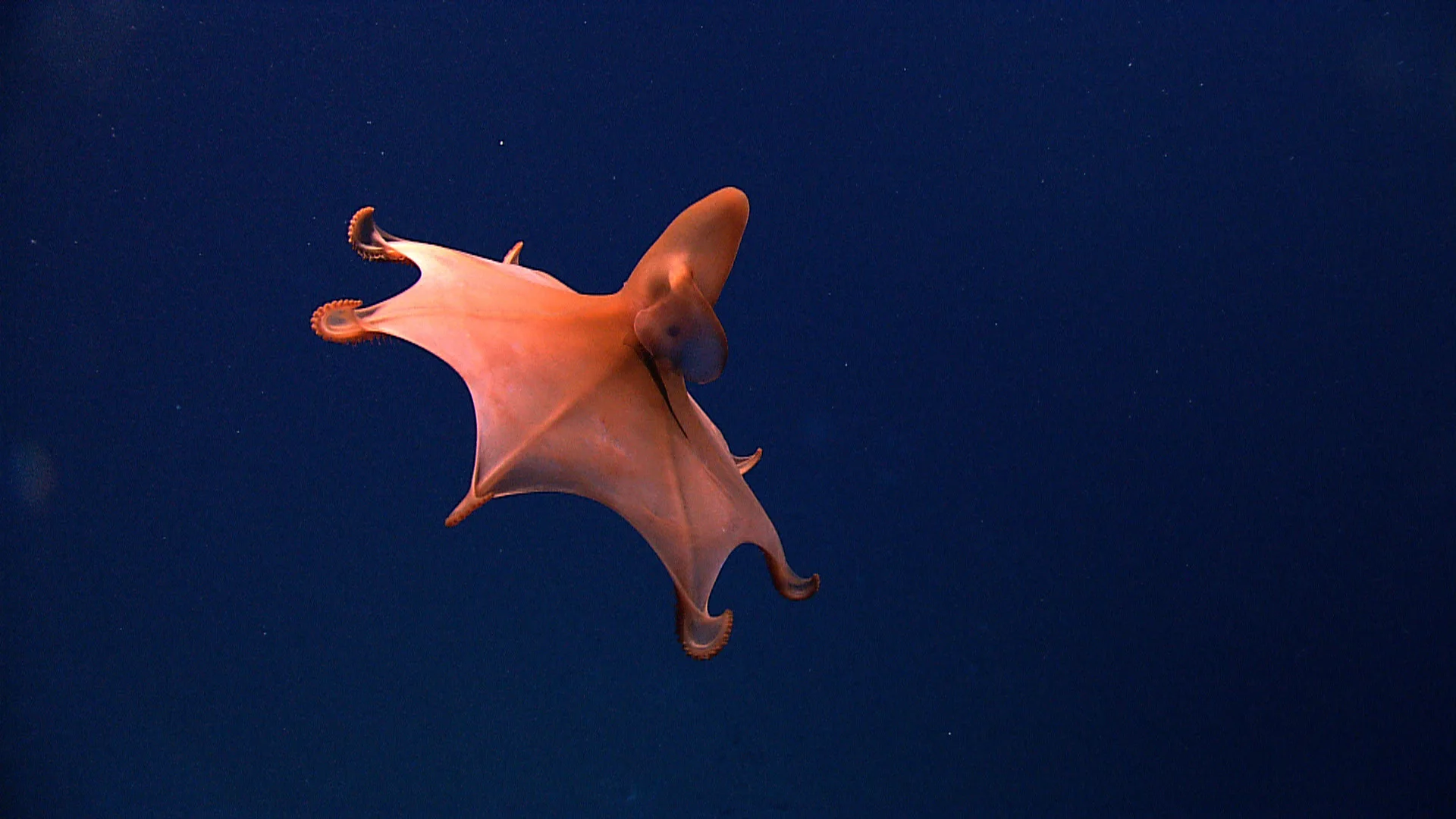Concerns with Deep Sea Mining
Ocean Conservancy study raises a minefield of issues

A rapid transition from fossil fuels to renewable energy is critical to addressing the climate crisis and minimizing further impacts on marine ecosystems and coastal communities. And doing so relies on large quantities of critical minerals to power zero-emission technologies such as electric vehicles, solar panels and storage batteries. The ocean is increasingly viewed as a potential source for these minerals, but a new study published today in Frontiers in Marine Science by Ocean Conservancy and our colleagues highlights a range of concerns that must be addressed before we rush to mine the deep sea.
Get Ocean Updates in Your Inbox
Sign up with your email and never miss an update.
Our findings are especially timely as just last month the International Seabed Agency (ISA) began accepting commercial mining license applications, even though ISA member countries have failed to adopt new evidence-based regulations for the international seabed. The U.S. Congress has taken notice and just introduced federal legislation to proactively ban the mining of critical minerals in our own exclusive economic zone (EEZ) while calling for a moratorium on these nascent mining efforts on the international seabed. Our paper shows our elected officials are right to be concerned about the pace of these developments as the risks to deep sea ecosystems are numerous but poorly understood.
We already know what happens when an extractive industry is allowed unscrutinized and nearly regulation-free access to our ocean. The fossil fuel industry’s pillaging of our ocean has left thousands of miles of pipelines scarring our ocean floor, oil wells boring holes deep into the seabed and both large and small scale oil spills decimating marine ecosystems and wildlife. We can’t let the deep sea mining industry further harm our ocean, and our study shows the many ways that could happen.

We found that marine species and human uses in the vicinity of potential mining sites in U.S. federal waters would almost certainly experience harmful effects of criterial minerals extraction. We analyzed the spatial overlap between probable seabed mining sites and vulnerable habitats, marine species and human infrastructure at select locations in the U.S. EEZ. These included portions of the Gulf of Alaska, Hawaiian Islands, Offshore California and the Blake Plateau off the U.S. Southeast Coast because these “prospective mineral zones” have a higher likelihood of ferromanganese nodules or crusts, which may harbor critical minerals such as cobalt and lithium needed for clean-energy technologies.
When we crunched the data, a minefield of concerns emerged. While each region is ecologically important, the Blake Plateau and the Hawaiian Islands have the highest biological diversity compared to other prospective mineral areas, with more threatened species and fishes. The Offshore California and Gulf of Alaska locations, on the other hand, are notable for their human uses. More ships transit through Offshore California waters, and more submarine cables are found there than at the other locations. The Gulf of Alaska location supports productive fisheries, with commercial seafood landings higher than in other prospective zones.
Scientific research suggests that mining at all these locations could result in the loss or destruction of irreplaceable habitats that have developed over tens of millions of years. And with the loss of those habitats would come the loss of numerous marine species. In the Hawaiian Islands, for example, removing ferromanganese nodules could kill or harm the corals, sponges and fish that live on or near the nodules. Stirring up the sediment that underlies nodules could generate sediment plumes as long as 1,400 km. Such plumes could impact how species in the water column feed or interfere with their sensory functions, even stretching into the Papahānaumokuākea Marine National Monument, a culturally significant area to native Hawaiians.
Excavating layers of ferromanganese crust from seamounts in these locations would be analogous to mountaintop removal on land, scouring away the substrate and killing corals and other immobile animals attached to these surfaces. And we cannot rule out the possibility of human-use impacts as well. Industrial mining could damage seafloor cables critical to global communications, and the presence of mining vessels could elevate the risks of collisions with cargo or fishing vessels. Commercially important fishes living on or near mined surfaces, such as black cod in Alaska, or those inhabiting the water column, such as tunas, are potentially vulnerable as well.
Here is the rub: There are gaping holes in our knowledge of deep ocean ecology, so much so that decision-makers are largely in the dark when evaluating ecological risks, identifying spatial conflicts and minimizing the trade-offs between seabed mining and protecting ecosystem services and existing human uses. Our study helps shed some light on these issues, but scientists and regulators need more data before intelligent decisions about the future of the deep sea can be made. At present, governing bodies like the ISA can’t make informed decisions because they don’t have the baseline data on the biological diversity of the deep sea that is needed to make evidence-based, robust risk assessments.
We need to learn from the mistakes we’ve made with the fossil fuel industry and prevent further destruction of our ocean by yet another extractive industry whose risks to marine life are substantial and potentially disastrous. A clean-energy and zero-carbon future is imperative, and we can and must get there responsibly, without compromising the health of our ocean.
Our new study highlights that there is a minefield of concerns that must be addressed before private companies are allowed to mine the last frontier. Until then, seabed mining must not advance, whether internationally via the ISA or here in the United States.